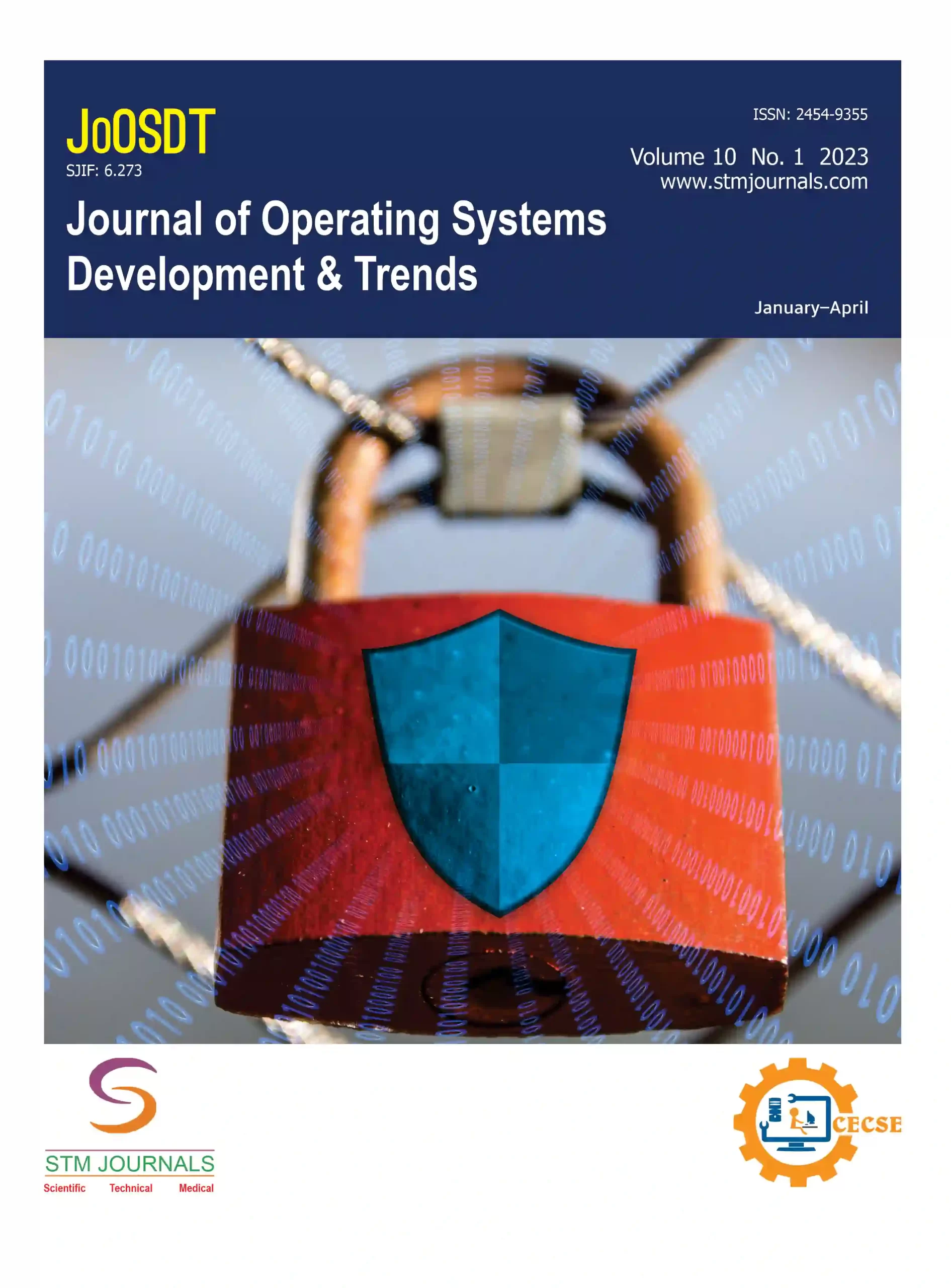
Sania

Neha Sindhu

Yogita Gigras

Shilpa Mahajan
- Student Department of Computer Science and Engineering, The NorthCap University, Gurugram Haryana India
- Student Department of Computer Science and Engineering, The NorthCap University, Gurugram Haryana India
- Associate Professor Department of Computer Science and Engineering, The NorthCap University, Gurugram Haryana India
- Associate Professor Department of Computer Science and Engineering, The NorthCap University, Gurugram Haryana India
Abstract
In the dynamic landscape of cybersecurity, organizations confront increasingly intricate cyber threats that necessitate sophisticated security measures. Conventional systems such as Security Information and Event Management (SIEM) systems face ongoing challenges, they often struggle to effectively detect and mitigate sophisticated attacks within extensive data sets. To address these limitations, the introduction of Gatividhi Guard signifies a paradigm shift in SIEM technology. Gatividhi Guard is an innovative SIEM platform leveraging advanced Artificial Intelligence and Machine Learning (AIML) algorithms. Its primary objective is to empower organizations with enhanced threat detection capabilities and comprehensive user behavior analysis. Through the integration of AIML, Gatividhi Guard excels in swiftly and accurately identifying and neutralizing cyber threats. A distinguishing feature of Gatividhi Guard lies in its ability to track user mouse movements and locations, facilitating the mitigation of insider threats. This proactive approach to monitoring user activity adds a layer of security crucial for safeguarding digital assets. Moreover, Gatividhi Guard offers intuitive dashboards and robust reporting tools, enabling security analysts to gain deeper insights into security events and make informed decisions to mitigate risks effectively. By presenting security data in a user-friendly manner, Gatividhi Guard enhances the efficiency of security operations and strengthens overall cybersecurity posture. This paper elucidates the design and features of the Gatividhi Guard, providing comprehensive guidance on its implementation and setup. By elucidating the significance of the Gatividhi Guard in protecting digital assets, the paper underscores the indispensable role of AI-driven solutions in addressing modern cybersecurity challenges. Gatividhi Guard emerges as a pivotal asset for organizations seeking to fortify their IT systems against emerging threats. Through the strategic integration of AI and comprehensive user behavior analysis, Gatividhi Guard empowers organizations to confront new cybersecurity challenges with confidence, thereby elevating the overall security resilience of their digital infrastructure.
Keywords: SIEM, cybersecurity, AI, machine learning, threat detection, user behavior analysis, insider threats, Gatividhi Guard
[This article belongs to Journal of Operating Systems Development & Trends(joosdt)]
References
- Williams A. Security information and event management technologies. Siliconindia. 2006;10:
34–35. - Arora K, Mahajan S. Detecting denial-of-service attack using dendritic cell approach. In: Proceedings of the Second International Conference on Information Management and Machine Intelligence: ICIMMI 2020. Springer: Singapore; 2021. pp. 509–516.
- Liu H. (Vol. 1994, No. 1, p. 012021) A insider threat detection system based on user and entity behavior analysis. In: Journal of Physics: Conference Series. IOP Publishing; 2021.
- Roohparvar R. (2019). What is SIEM software? How it works and how to choose the right tool? – Cyber Security Solutions, Compliance, and Consulting Services – IT Security. [online] Cyber Security Solutions, Compliance, and Consulting Services – IT Security – We offer It security management, data, network, & Information security services for protecting information & mitigating security risks to your organization. Available from: https://www.infoguardsecurity.com/what-is-siem-software-how-it-works-and-how-to-choose-the-right-tool/.
- Abidar R, Moummadi K, Moutaouakkil F, Medromi H. Intelligent and pervasive supervising platform for information system security based on multi-agent systems. International Review on Computers and Software. 2015;10:44–51. DOI: 10.15866/irecos.v10i1.4699.
- Gates C, Taylor C. Challenging the anomaly detection paradigm: A provocative discussion. In: Proceedings of the 2006 Workshop on New Security Paradigms 2006 Sep. 19. 2006. pp. 21–29. DOI: 10.1145/1278940.1278945.
- Quadrant M. Magic quadrant for security information and event management. Magic Quadrant. 2014:1–16.
- Customize anomaly scoring rules – splunk documentation. Splunk.com. Available from: https://docs.splunk.com/Documentation/UBA/5.0.5.1/Admin/ScoringRules.
- Salehi V, Veitch B, Smith D. Modeling complex socio-technical systems using the FRAM: A literature review. Human Factors and Ergonomics in Manufacturing and Service Industries. 2021;31:118–142. DOI: 10.1002/hfm.20874.
- Fan CI, Tseng YF, Su HP, Hsu RH, Kikuchi H. Secure hierarchical Bitcoin wallet scheme against privilege escalation attacks. International Journal of Information Security. 2020;19:245–255. DOI: 10.1007/s10207-019-00476-5.
- Johnson A. CCNA Cybersecurity Operations Companion Guide. Cisco Press; 2018.
- Yang IA, Brown JL, George J, Jenkins S, McDonald CF, McDonald VM, et al. COPD‐X Australian and New Zealand guidelines for the diagnosis and management of chronic obstructive pulmonary disease: 2017 update. Medical Journal of Australia. 2017;207:436–442. DOI: 10.5694/mja17.00
- Najafi P, Mühle A, Pünter W, Cheng F, Meinel C. MalRank: A measure of maliciousness in SIEM-based knowledge graphs. In: Proceedings of the 35th Annual Computer Security Applications Conference. 2019. pp. 417–429. DOI: 10.1145/3359789.3359791.
- Inderwildi O, Zhang C, Wang X, Kraft M. The impact of intelligent cyber-physical systems on the decarbonization of energy. Energy and Environmental Science. 2020;13:744–771. DOI: 10.1039/C9EE01919G.
- Ali S, DiPaola D, Lee I, Sindato V, Kim G, Blumofe R, et al. Children as creators, thinkers and citizens in an AI-driven future. Computers and education. Artificial Intelligence. 2021;2:100040.
- Singh S, Gupta H, Sharma P, Sahi S. Advances in artificial intelligence (AI)-assisted approaches in drug screening. Artificial Intelligence Chemistry. 2024;2:100039. DOI: 10.1016/j.aichem.2023.
- Li H, Chen W, Tan X, Tan X. Back analysis of geomechanical parameters for rock mass under complex geological conditions using a novel algorithm. Tunnelling and Underground Space Technology. 2023;136:105099. DOI: 10.1016/j.tust.2023.105099.
- Patel N, Corbett B, Mhaskar P. Model predictive control using subspace model identification. Computers and Chemical Engineering. 2021;149:107276. DOI: 10.1016/j.compchemeng.2021.
- Sharma S, Mahajan S. Design and implementation of a security scheme for detecting system vulnerabilities. International Journal of Computer Network and Information Security. 2017;9:24–32. DOI: 10.5815/ijcnis.2017.10.03.
- Amos Z. Combine machine learning and UEBA for advanced threat detection. Isa.org. Available from: https://gca.isa.org/blog/combine-machine-learning-and-ueba-for-advanced-threat-detection.

Journal of Operating Systems Development & Trends
| Volume | 11 |
| Issue | 01 |
| Received | April 9, 2024 |
| Accepted | April 20, 2024 |
| Published | May 3, 2024 |

